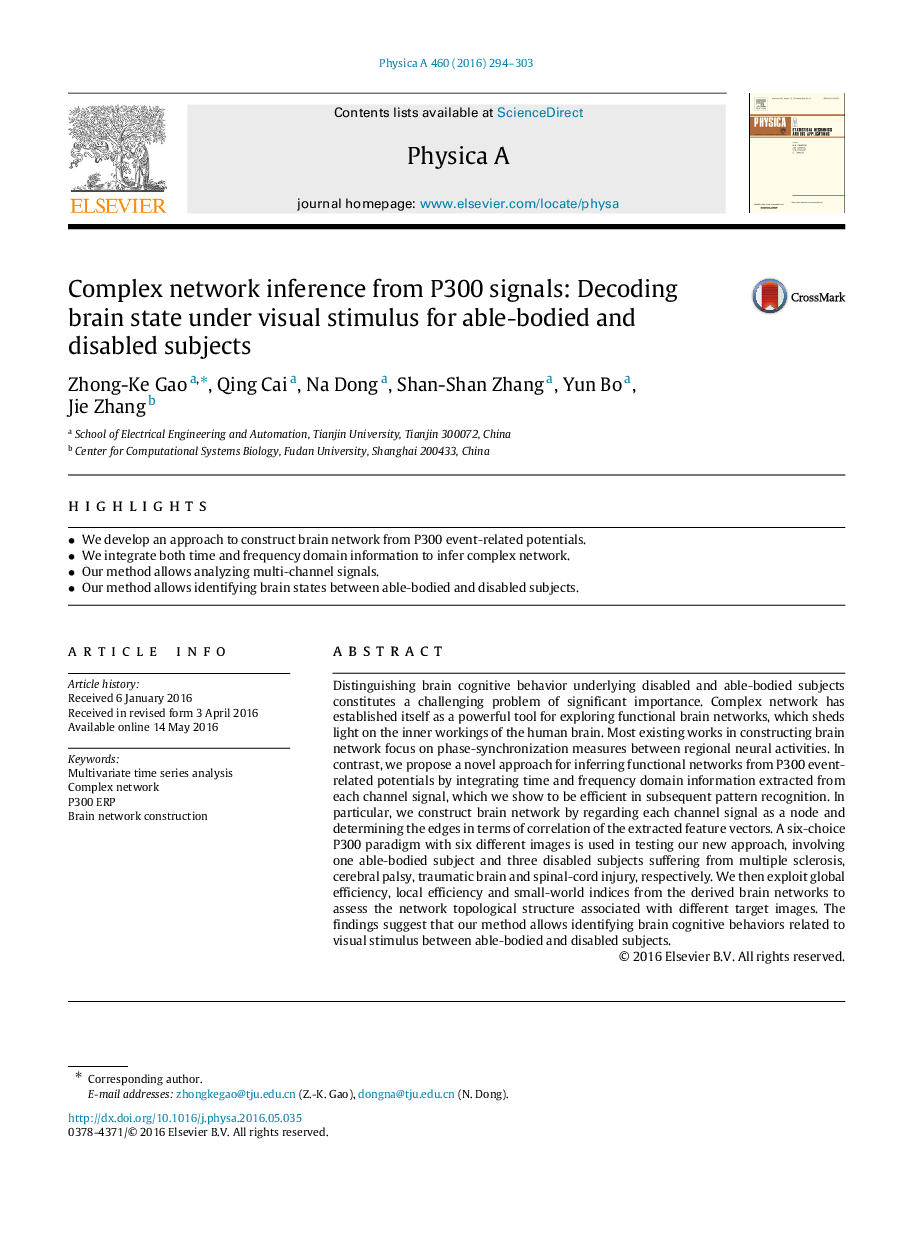| Article ID | Journal | Published Year | Pages | File Type |
|---|---|---|---|---|
| 973554 | Physica A: Statistical Mechanics and its Applications | 2016 | 10 Pages |
•We develop an approach to construct brain network from P300 event-related potentials.•We integrate both time and frequency domain information to infer complex network.•Our method allows analyzing multi-channel signals.•Our method allows identifying brain states between able-bodied and disabled subjects.
Distinguishing brain cognitive behavior underlying disabled and able-bodied subjects constitutes a challenging problem of significant importance. Complex network has established itself as a powerful tool for exploring functional brain networks, which sheds light on the inner workings of the human brain. Most existing works in constructing brain network focus on phase-synchronization measures between regional neural activities. In contrast, we propose a novel approach for inferring functional networks from P300 event-related potentials by integrating time and frequency domain information extracted from each channel signal, which we show to be efficient in subsequent pattern recognition. In particular, we construct brain network by regarding each channel signal as a node and determining the edges in terms of correlation of the extracted feature vectors. A six-choice P300 paradigm with six different images is used in testing our new approach, involving one able-bodied subject and three disabled subjects suffering from multiple sclerosis, cerebral palsy, traumatic brain and spinal-cord injury, respectively. We then exploit global efficiency, local efficiency and small-world indices from the derived brain networks to assess the network topological structure associated with different target images. The findings suggest that our method allows identifying brain cognitive behaviors related to visual stimulus between able-bodied and disabled subjects.
